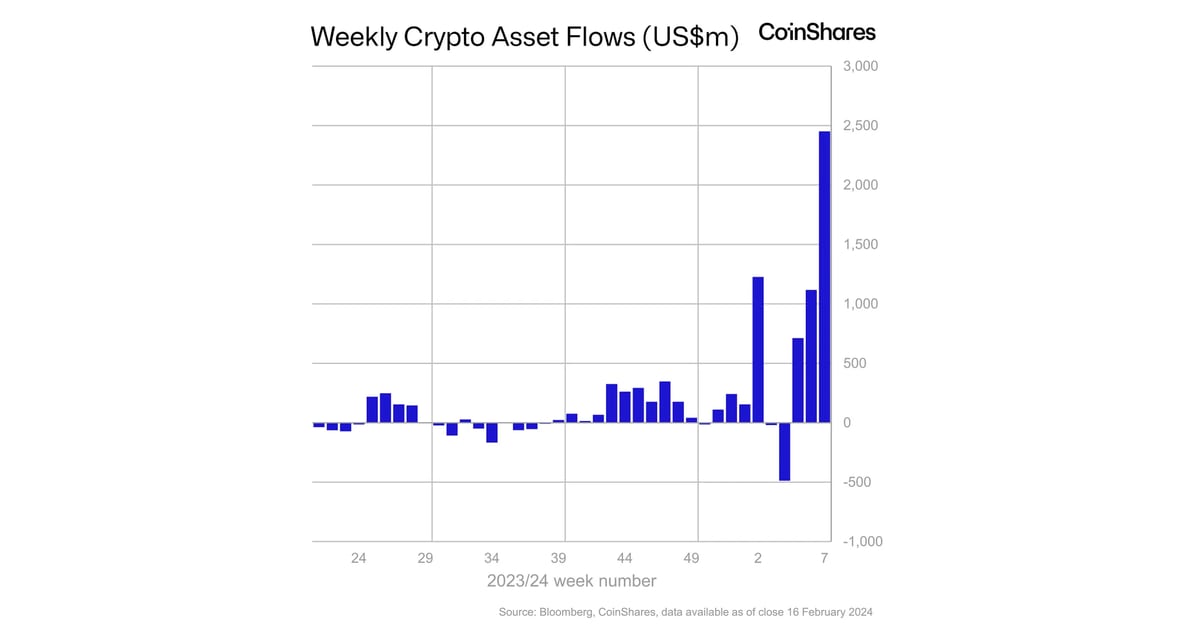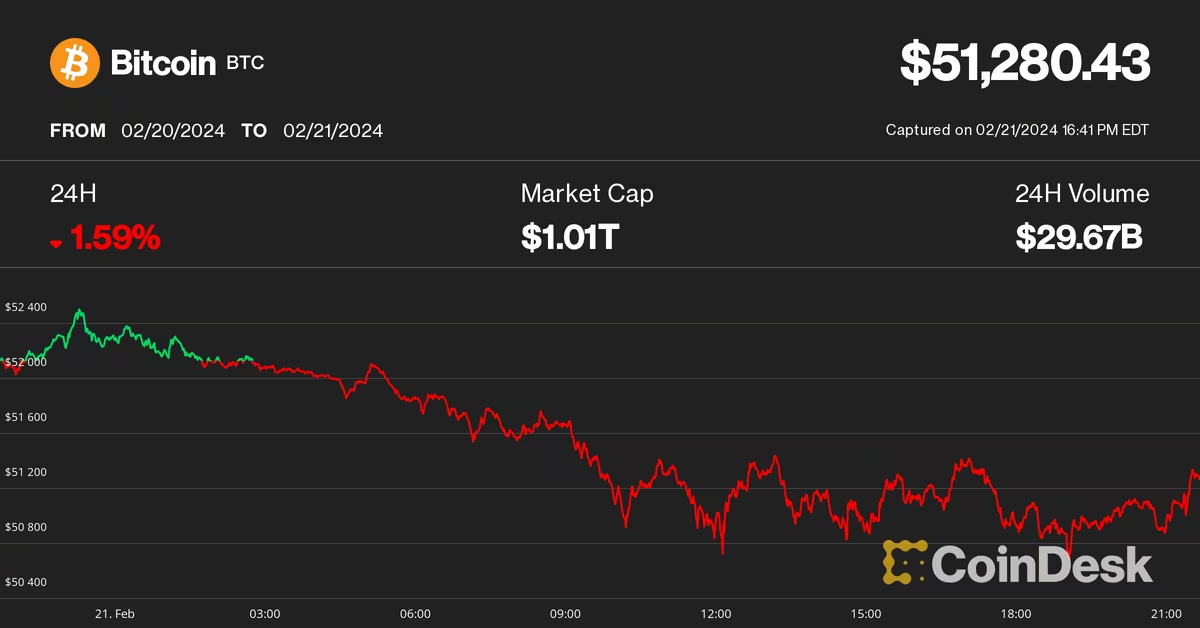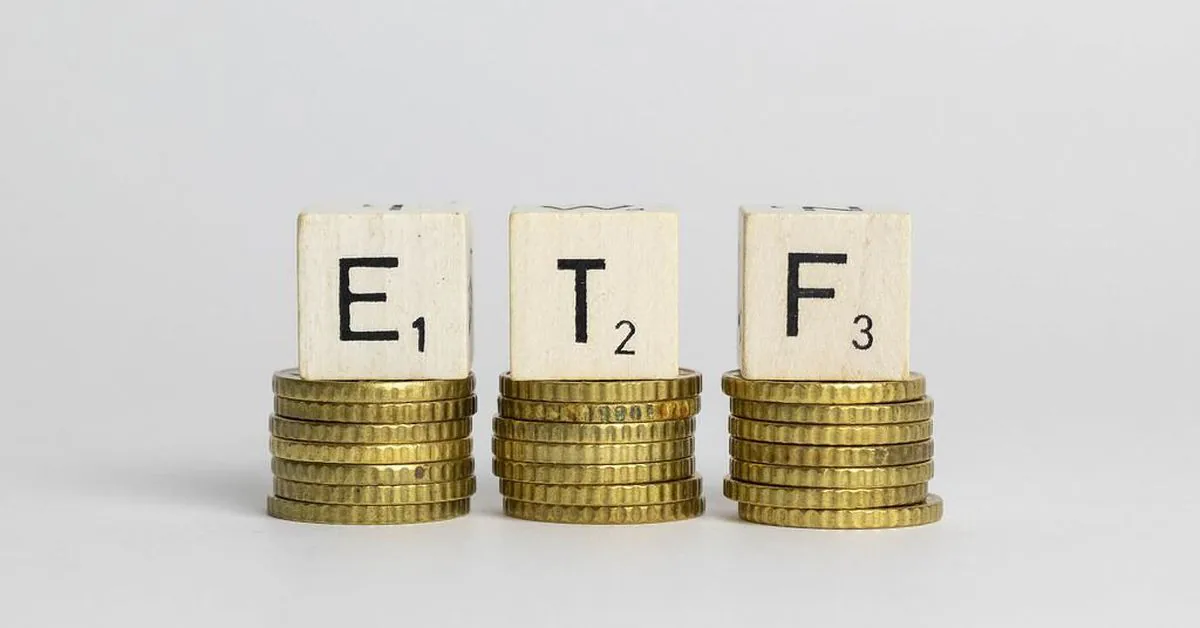Is it really feasible for Polkadot to explore reducing inflation?
Exploring the Feasibility of Reducing Inflation in Polkadot Is it Viable?Author: Polkadot Labs
Background
On October 26, Filippo Franchini, a technical educator at Web3 Foundation, posted a tweet on X (formerly Twitter) expressing support for burning all revenues generated from Polkadot Coretime sales.
Filippo Franchini believes that this would be the only way to classify these revenues as “pure network revenues” because if they enter the treasury, they would eventually be sold (and a small portion burned). Tokens need more substantial deflationary pressure, and Coretime sales can provide this pressure, although initially not significant. However, this may also be another motivation to prevent them from flowing into the treasury.
At some point, due to the existence of the burning mechanism, the net inflation rate could be far below 10%, and by then, someone may vote to transfer part of the sales proceeds to the treasury. It turns out that OpenGov is very efficient in implementing emergency proposals (see the ideal staking rate). Filippo Franchini states that what may be more important to him is that even though the initial sales volume is not significant, burning them would have a huge positive social impact, making DOT more interesting.
- CEO suddenly exits, where is OpenAI heading?
- In-depth analysis of the core mechanism of Celestia Under the modular trend, what should the estimated TIA be?
- NFT & ERC-6551 The Resurgence of a New Star
This tweet sparked intense discussions among community members, with most members agreeing with this viewpoint, but some also believe that “it’s all speculation” and it’s too early to draw conclusions.
The next day, Filippo Franchini published another tweet, further explaining why he believes that all Coretime sales revenues should be burned instead of flowing into the treasury.
He mentioned that the ideal staking rate has increased from 51% to 59%, and with the current 50% staking rate, the treasury revenue from DOT inflation has doubled. Regardless, the store of value is mainly driven by adoption rate, not solely dependent on the degree of asset deflation. However, he does not underestimate the social effects of increasing additional deflationary pressure in the Polkadot economy.
Coretime will be a tradable asset, and its sales revenue will be influenced by numerous factors beyond our imagination. Even if these sales revenues are negligible compared to the annual 10% inflation rate of DOT (which should be another motivation to not transfer these sales revenues to the treasury), the social effects of burning these sales revenues may have a wide-ranging positive impact on the ecosystem economy.
He also stated that in an ideal scenario, Coretime sales would reduce the net inflation rate of DOT, and OpenGov can intervene and change the situation as needed.
In fact, as early as mid to late July, Jonas from Web3 Foundation initiated an RFC (request for comments) on Github proposing to burn the revenues generated from upcoming Polkadot Coretime sales.
Jonas stated that having consistent and predictable treasury income aligns with the interests of the Polkadot community, as volatility in inflows can be harmful, especially in times of insufficient funding. Therefore, this RFC operates under the assumption of a stable and sustainable stream of treasury income, which is crucial for the stability of the Polkadot community. According to Jonas, burning parachain auction revenues has three major benefits: balancing inflation, providing clear incentives, and achieving collective value.
Earlier in July, Jonas proposed adjusting the current inflation model on the Polkadot forum. Jonas believes that the current inflation model could potentially result in the inflow of funds (from inflation) to the treasury decreasing to zero.
Essentially, the annual inflation rate is fixed at 10%, and the allocation between stakers and the treasury is determined by the difference between the ideal staking rate and the actual staking rate. In this case, the treasury would receive 0DOT from inflation.
The following chart depicts the historical evolution of the staking rate compared to the ideal rate:
As the gap between these two indicators narrows, the treasury’s share of stakers’ rewards will decrease, and it is expected that the gap between these two main indicators will further decrease in the future. This also means that the treasury’s balance may struggle to support its ongoing expenses.
According to Jonas, in order to ensure that the treasury operates effectively and with a predictable minimum inflow, we should modify the underlying model. Jonas proposed allocating 20% of the yearly inflation directly to the treasury, while the remaining 80% would be adjusted using the current mechanism. The following image provides a representation of the proposed mechanism:
Since the proposed allocation reflects historical distribution, the impact of these modifications is minimal. The resulting parameters should be made public for easier future adjustments. Additionally, implementing this change requires runtime upgrades and root management permissions, thus extensive discussion is still needed. Once consensus is reached, the proposed changes need to be encoded and incorporated into a runtime upgrade.
Views on the issue of inflation
Is adjusting the current inflation model beneficial for the entire ecosystem? Some forum members have expressed their opinions on Jonas’ proposal.
Forum member lolmcshizz believes that more data is needed on the new national treasury expenditure rate under OpenGov, as well as future treasury income data after the launch of time sales.
OpenGov has been running for some time and, after going through the “painful process” of approving each treasury expenditure, everyone realized that this is unsustainable. Therefore, a reassessment was made on which should and should not receive funds from the treasury to determine the “real treasury operating rate.” With the launch of “Polkadot 2.0,” the model shifted to a pattern where DOT pays for blockchain space, and these DOTs will enter the treasury and potentially make up for any deficits caused by inflation.
joepetrowski believes this is a reasonable suggestion, but with the development of Agile Coretime, the mechanism can be reevaluated, not just adjusting the parameters.
As the payment method for Coretime will be a direct payment rather than locking DOT, it can be studied whether the treasury or validators need to obtain funds through inflation.
For example, funds from Coretime payments can be allocated 100% to the treasury (i.e., purchasing Coretime can provide funds for the future development of the network). But in principle: purchasing Coretime provides funds to the treasury → the treasury receives good allocation → more projects want to use Coretime (because of its higher quality or more services that make it easier to use/integrate) → the projects that want to use Coretime acquire DOT to purchase it → put DOT back in the treasury.
Then, we can consider reducing inflation (but it is not the goal itself as long as the demand for Coretime grows bigger, inflation is not a problem). However, inflation should mainly provide funding for the growth of validators, which is also the need for more parallel cores. In this way, the treasury will either increase revenue due to the growing demand for a fixed number of cores, or maintain a constant price/core when the number of cores increases.
AlistairStewart believes that the income from Coretime will gradually increase at the beginning and suggests modifying the mechanism according to the situation.
First, the initial cost of each core is low, Gavin has promised this, otherwise existing parallel chain projects may have to quickly launch new models; second, every time we introduce Coretime and stop auctions, we will adhere to the existing lease period, so the number of cores that need to be paid for will gradually increase within two years; finally, improvements to the parallel chain system will provide us with more cores, but who knows if the demand will match?
AlistairStewart stated that we cannot predict the situation two years from now, and inflation provides a more predictable source of funds for the treasury and stakers. Therefore, he suggests implementing such reforms first and then considering whether Coretime income should be burned. In a few years, if we can lower the inflation rate and have a high demand for cores, we may even end up with deflation.
Polkalytics researchers Alice and Bob believe that the proposal is not appropriate in terms of validation.
He said that we should not immediately conclude that we need to increase treasury revenue, but rather come up with a framework for how much inflow and outflow is desirable within a market cycle. Because in a prosperous market, it is entirely possible for the outflow of treasury funds to decrease, and the problem may also disappear or begin to manifest in different ways. Only once we have clarified this issue and have a concept of the budget should we then turn to changing the parameters of the system.
As a feasible compromise, Alice and Bob propose reaching a consensus through discussion on the minimum and maximum parameters for inflow and outflow, and then formulating a model that accommodates these parameters.
Other forum members have also made insightful suggestions, although everyone’s ideas are different, most people agree that more data analysis is needed before moving forward with this proposal. These discussions are essential as they can help us gain a deeper understanding of the functioning and optimization directions of the Polkadot ecosystem. Strengthening communication with the community is also essential before making any major changes, as this will allow for more feedback and suggestions to be collected.
Several issues related to Polkadot’s inflation
From the above situation, we can see that Polkadot’s inflation involves multiple aspects.
Firstly, the inflation rate of Polkadot will affect the yield of staking and the amount of funds flowing into the treasury. On the other hand, the current expenditure from the treasury is calculated based on the USD amount requested in each proposal, divided by the current price of DOT, to determine the specific number of DOT to sponsor each proposal. Therefore, when the price of DOT is low, it will deplete the number of DOT in the treasury. This sets off a chain reaction where the treasury funds are depleted rapidly, leading to stricter scrutiny of many treasury proposals and the rejection of numerous proposals, causing many developments to stagnate.
Although raising the standards for reviewing treasury proposals is fundamentally a good thing, the actual situation is not as ideal as imagined, as many voters blindly voted against proposals without fully understanding the specific circumstances, solely because they believed that the proposals were too costly. With such sentiment, it seriously hinders the normal operation of Polkadot governance.
Secondly, the community generally believes that Polkadot’s inflation rate is too high, which also greatly affects the psychology of holders who do not participate in staking. Many people would think that with high inflation, their DOT holdings would depreciate, causing them to sell DOT and thereby lower the DOT price.
Furthermore, high inflation also affects the development of the ecosystem applications. Steaking rewards become very high due to high inflation, with DOT staking rewards already exceeding 15%. Such a high return rate is much higher than those offered by some mature business models (such as lending, AMMs, etc.), and the rewards offered by projects in the ecosystem will lose sufficient attractiveness. Funds will be more inclined to participate in DOT staking, which is detrimental to the development of ecosystem applications.
In addition, Polkadot’s slot auction used to be participated by locking DOT tokens in order to obtain the right to use the Polkadot block space. However, with Gavin’s proposal of Polkadot 2.0, the slot auction will be changed to buying and selling of core time. But currently, there is no revenue obtained from the sale of core time, so it is uncertain how to handle this portion of DOT tokens. Therefore, there has been recent discussions about the income from core time, hoping to somewhat solve the issue of high inflation in Polkadot.
According to Filippo, a technical educator from the Web3 Foundation, in his reply on Twitter and recent interviews with PolkaWorld, we can easily see that he has his own understanding of the issue of inflation in Polkadot. He believes that inflation in Polkadot is not the most important issue to be concerned about. He thinks that inflation in Polkadot is important because Polkadot is not like developed countries, it is more like a developing country that is rapidly growing, so it needs a faster pace of development. The GDP growth rate of developing countries can reach 10%, so he believes that Polkadot’s 10% inflation rate is not high. Currently, 10% inflation not only incentivizes network participants, but also forms a treasury that can fund a lot of projects.
He believes that there could be a big risk in reducing inflation, and reducing too much inflation will negatively impact Polkadot’s growth. So, it is necessary to carefully address this issue. He believes that people should not worry about inflation. Bitcoin, for example, is a type of inflation where inflation is gradually decreasing. Bitcoin’s growth mainly comes from adoption. And Polkadot’s income from core time may be burned through the OpenGov method, and he is very confident that this proposal will be approved. He believes that the income from core time is the true network revenue, and burning all the income from core time will create a narrative of token deflation for Polkadot.
Our Opinion
We believe that Filippo’s viewpoints have many misconceptions.
Firstly, the fact that the GDP growth rate of developing countries can reach 10% annually does not mean that a 10% inflation rate in Polkadot is reasonable. These two should not be mistaken for each other. The case of a developing country achieving 10% GDP growth rate can be understood as an analogy where a balloon expands by 10% after the gas inside has increased, compared to its previous state. On the other hand, the case of a 10% inflation rate in Polkadot per year is equivalent to a rigid container that forcibly expands by 10% while the total amount of gas inside remains the same. Although the container appears to have expanded by 10%, the density of the gas inside has also decreased by 9.1%.
The former is a bottom-up growth based on economic strength, while the latter is a top-down forced expansion of 10%, which naturally dilutes the corresponding value. Therefore, we need to reconsider the question of whether “a 10% inflation rate in Polkadot is reasonable.”
Next, Filippo believes that there may be a significant risk in reducing inflation, as reducing too much inflation could impact the growth of Polkadot. His concern here is mainly about depleting the treasury, and reducing Polkadot’s inflation would decrease the amount of DOT assets entering the treasury. However, as we have previously analyzed, inflation would lower prices and accelerate the consumption of DOT in the treasury. Expectations of value appreciation for Polkadot, resulting in higher prices, would naturally slow down the consumption rate of the treasury.
In addition, treasury revenue can also be increased by adjusting the optimal staking rate, and rewards from parachains can be channeled into the treasury. But there is another advantage to price increase, which is bringing more confidence from users in Polkadot. Our previous survey showed that over 90% of people are dissatisfied with the current inflation rate, so the negative emotions caused by high inflation outweigh the benefits of reducing inflation.
Finally, Filippo believes that burning all the rewards from parachains, even if the initial sales volume is not significant, would have a tremendous positive social impact and make DOT more interesting. However, I believe that although this would create a narrative of deflation and generate some bullish sentiment, emotions are not sustainable, and blockchain data is transparent and visible. Therefore, the deflationary effect of burning all the rewards from parachains can be calculated.
Given the current situation of Polkadot’s slot auctions and the initial commitment by Gavin that the rewards from parachains will be cheap, it is very likely that for a period of time, the rewards from parachains will be minimal and won’t have a significant immediate effect on reducing the inflation rate. “It will deflate, but not by much.”
How should rewards from parachains be allocated?
Returning to the topic of this discussion, how should rewards from parachains be allocated?
At least Filippo and others believe that they should all be burned, as this approach is relatively simple and creates a narrative of a deflationary trend in Polkadot’s network revenue, without affecting the overall inflation rate of Polkadot, ensuring sufficient DOT flows into the Polkadot treasury.
However, I believe that to answer this question, we need to further consider the goal of this issue. Is it just about adding a burning mechanism to Polkadot and creating some deflationary expectations? I believe that above this question, there should be a bigger question: How should Polkadot’s inflation rate be adjusted? The issue of reward allocation from parachains is just a subset of this larger question. We should approach solving this smaller question under the premise of solving the bigger problem.
So, in my opinion, burning all the income from the core time is a lazy approach, as it may not effectively solve Polkadot’s inflation problem. In terms of how to adjust Polkadot’s inflation, I have explained in detail in the “Improving Inflation: Dynamic Adjustment of Inflation” section of the “10,000-word Strategic Report | How can Polkadot escape the growth dilemma and find a future path?” Here is a direct quote from the conclusion:
Polkadot should adjust the overall inflation rate from 10% to 5%.
All the core time income of Polkadot should be transferred to the treasury.
The treasury should burn 1% every 24 days, and this fixed ratio can be changed to a dynamic ratio, ultimately controlling Polkadot’s inflation rate within ±2%.
I believe that core time income should not be burned directly, but instead should be transferred to the treasury and then burned collectively. This is because there are three possible scenarios for core time income: one is insufficient income, and burning it all may not directly regulate the inflation rate; the second is excessive income, which would lead to excessive burning of DOT, causing DOT to become more scarce and less usable; the third scenario is moderate income, which can keep Polkadot’s inflation rate within a moderate range.
If core time income is completely burned, there will inevitably be proposals to adjust the burning ratio and change it from complete burning to partial burning in order to make Polkadot’s inflation more moderate. So, we can see that core time income requires adjusting the burning ratio, and on the other hand, the treasury burns every 24 days. Therefore, if we want to adjust Polkadot’s inflation, we have to balance these two parameters simultaneously. This will make it more difficult for Polkadot to adjust in more complex situations in the future.
However, if we transfer all core time income to the treasury and only adjust the burning ratio every 24 days, we can control Polkadot’s inflation with a single parameter. This will make it easier for us to intuitively adjust Polkadot’s inflation and adapt to more variables.
Postscript
What do you think about the allocation of core time income?
Do you agree more with Filippo’s viewpoint: burning all core time income directly, bringing a narrative of “increased burning” to Polkadot, but the deflation effect may not be very obvious in the short term. Although the approach is relatively simple, the future results will become more complex and difficult to deal with more complex variables.
Or do you agree more with my viewpoint: transferring all core time income to the treasury, reducing the overall inflation rate from 10% to 5%, and finally controlling the inflation rate within ±2% by dynamically adjusting the burning ratio every 24 days. Although the process is more complicated, the future results are relatively simple and can cope with more complex variables.
Alternatively, everyone may have their own understanding. Either way, we hope that everyone can actively participate in important discussions similar to Polkadot. For example, you can share your views on the allocation of nuclear time income in github posts. Or participate in discussions on the economic model in the Polkadot forum.
We hope that everyone can express their own opinions and contribute to the DOT they hold. Only by accumulating small steps can we go a long way.
We will continue to update Blocking; if you have any questions or suggestions, please contact us!
Was this article helpful?
93 out of 132 found this helpful
Related articles
- Disney and Dapper Labs: Not Quite Partners, But Still Collaborators
- Tax-Loss Harvesting: Minimizing Taxes the Crafty Way
- Decoding Zephyr A new stablecoin protocol combining privacy and over-collateralization based on Monero.
- Cryptocurrency exchange BackLianGuaick attracts attention leveraging FTX’s former executives’ label, seizing the opportunity of Solana’s ecological heat to promote PYTH airdrop.
- MT Capital Insight Application chain migration and economic model updates drive DYDX price wheel growth.
- Responding to Vitalik’s call in the first place? Quick view of L2 Redstone, the chain game combined with OP+Plasma.
- Tick Tock Crypto Leaders Have Limited Time to Convince the IRS












